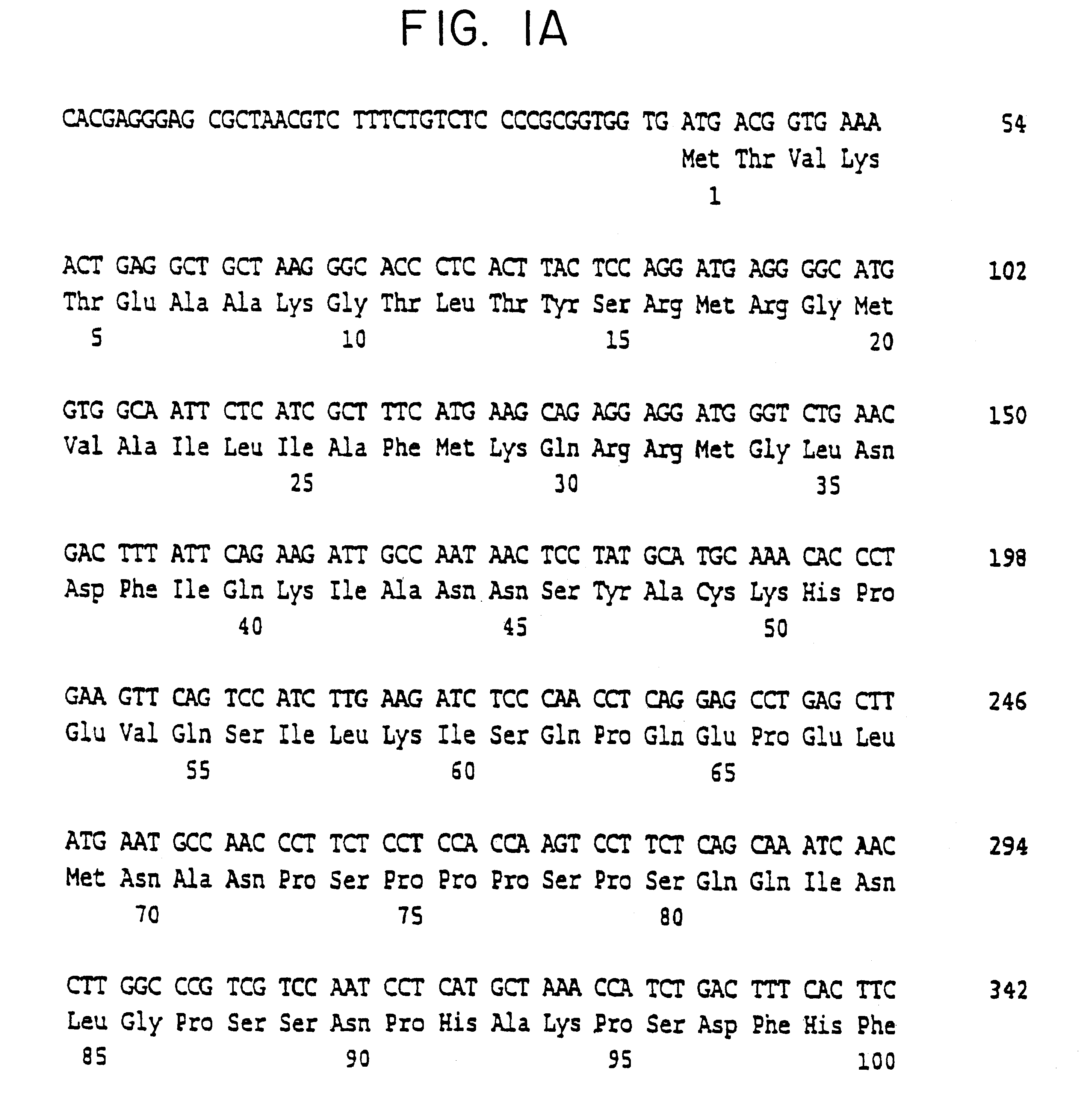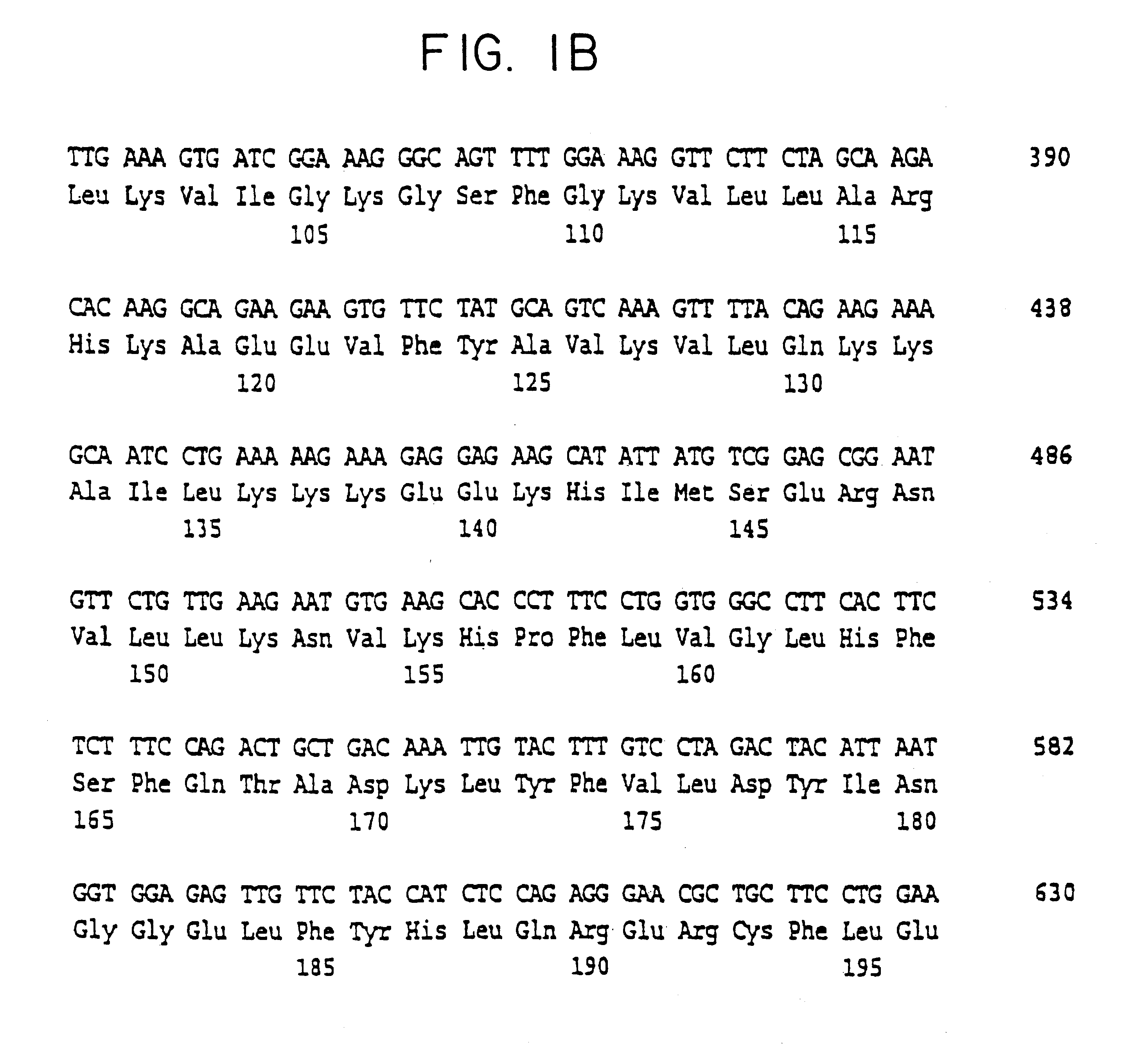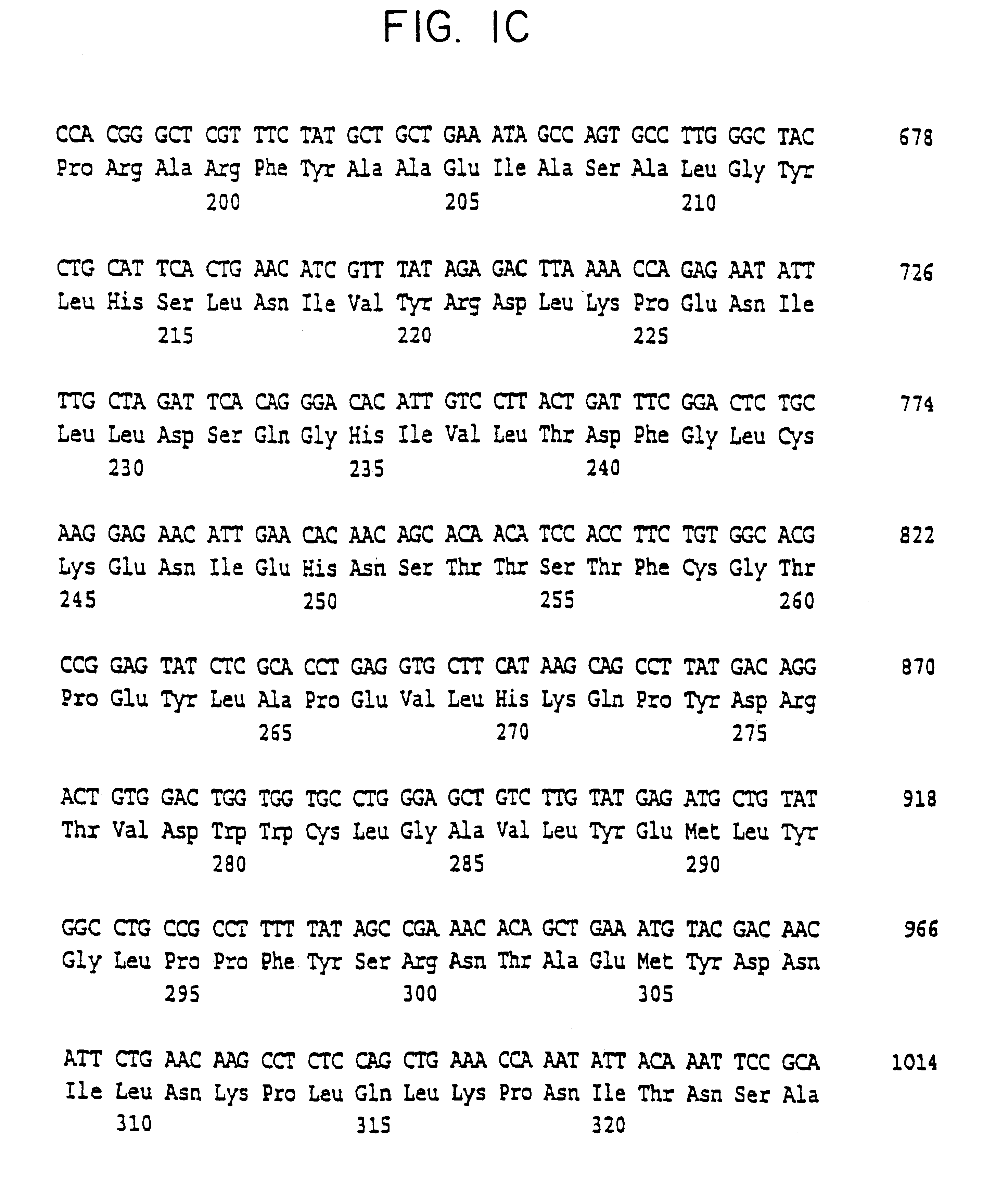Cell volume-regulated human kinase h-sgk
a human kinase and cell volume technology, applied in the field of human serine/threonine kinase, can solve the problems of impaired hepatic metabolism regulation, continuous challenge of cell volume, and extensive impairment of cellular functions
- Summary
- Abstract
- Description
- Claims
- Application Information
AI Technical Summary
Problems solved by technology
Method used
Image
Examples
Embodiment Construction
1. Procedure for Northern Hybridizations
10-20 mg of complete RNA or 1-2 mg of poly(A)-RNA were fractionated by electrophoresis in a 1% agarose gel in the presence of 2.2 M formaldehyde. Transfer to a positively charged nylon membrane took place with the aid of a Vacuum Blotter with 10.times.SSC as transfer buffer for a period of two hours. Subsequently, the RNA was cross-linked covalently to the membrane by controlled-power UV irradiation. Hybridization of the specific probe (25 ng / ml) was carried out at 50.degree. C. overnight in a buffer specially developed for the purpose of non-radioactive hybridization (DIG Easy Hyb, BOEHRINGER). The probe used in this case was amplified by means of the polymerase chain reaction from the 3' end of the coding sequence of the relevant h-sgk (nucleotide 980-1480) and simultaneously labeled by including DIG-dUTP in the reaction buffer. After the blots had been washed twice in 2.times.SSC at room temperature and in 0.5.times.SSC at 65.degree. C., th...
PUM
| Property | Measurement | Unit |
|---|---|---|
| Volume | aaaaa | aaaaa |
Abstract
Description
Claims
Application Information
 Login to View More
Login to View More - R&D
- Intellectual Property
- Life Sciences
- Materials
- Tech Scout
- Unparalleled Data Quality
- Higher Quality Content
- 60% Fewer Hallucinations
Browse by: Latest US Patents, China's latest patents, Technical Efficacy Thesaurus, Application Domain, Technology Topic, Popular Technical Reports.
© 2025 PatSnap. All rights reserved.Legal|Privacy policy|Modern Slavery Act Transparency Statement|Sitemap|About US| Contact US: help@patsnap.com



